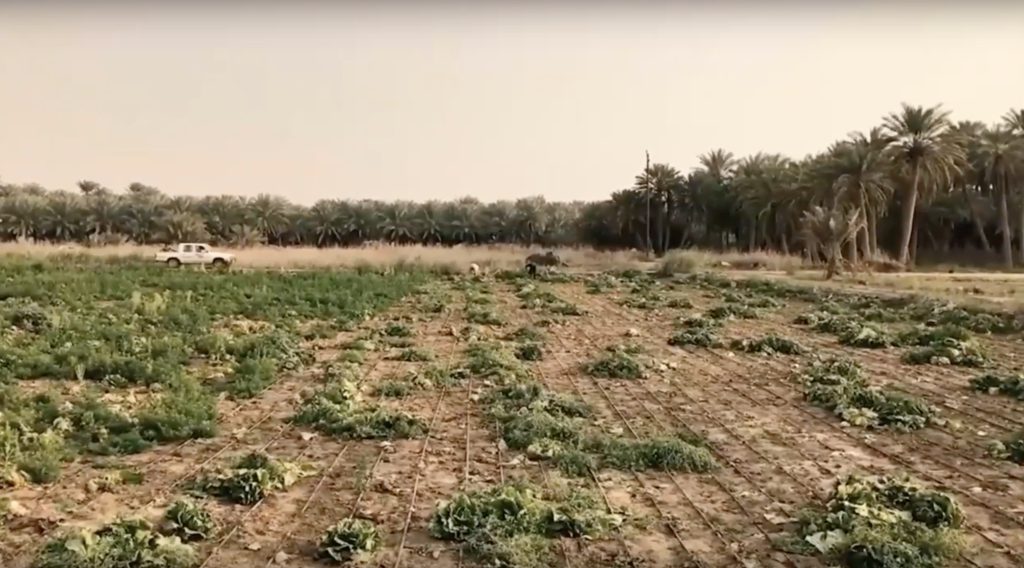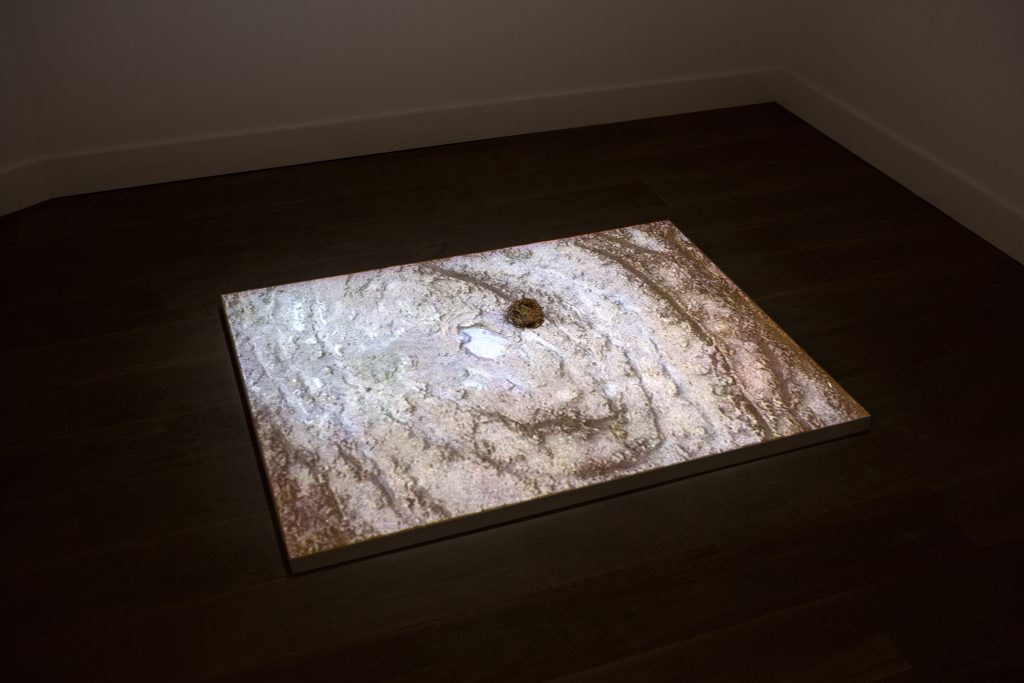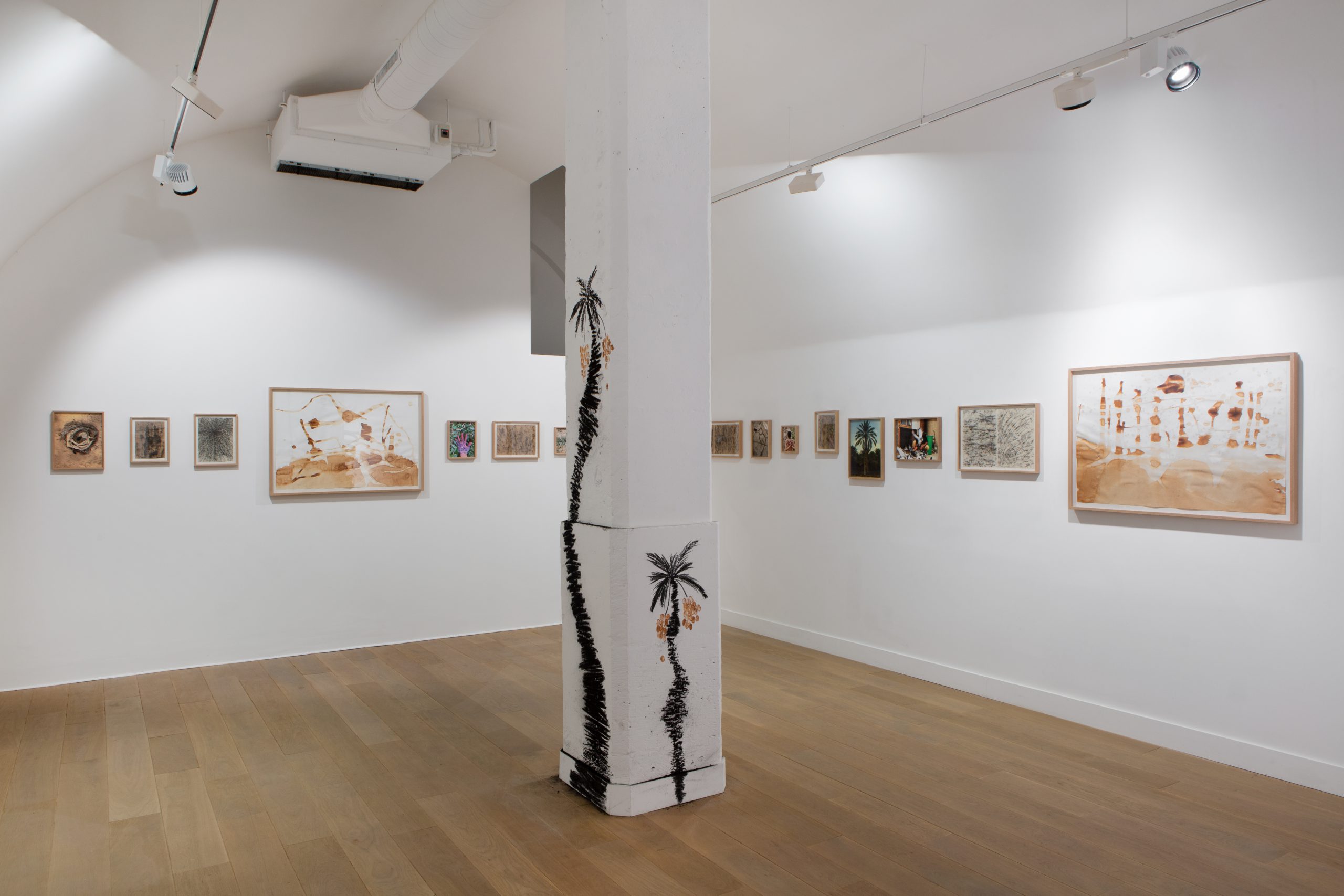The Date Fruit of Knowledge, the Saudi artist’s current show in Paris, is an impressive display of work hewn from organic materials.
Descend to the basement of Kamel Mennour’s Left Bank gallery this month and you will find yourself a world away from the boutiques and upmarket restaurants at ground level. The indications begin as you clamber down the spiral staircase, onto which Saudi artist Mohammad Alfaraj has tacked a fragment of cardboard emblazoned with the rough charcoal outline of a palm tree. The date palm, as the title of his current exhibition in the space suggests, is something of a personal emblem for Alfaraj, an easily identifiable symbol that represents an elemental force for the artist, sustaining life in locations that would otherwise be uninhabitable to man and beast alike.
Born in 1993 in the oasis settlement of Al-Ahsa, Alfaraj presents himself as a poetic artist, creating lyrical works in a variety of media, from sculpture to film and photography. At the base of his practice are humble materials and objets trouvés – dirt, palm fronds, dates – sourced from the immediate environs of his studio.

Photos. Archives Mennour. Image courtesy the artist and Mennour, Paris
The artist’s fingerprints are all over the show, quite literally: impressions of his outstretched hands, in charcoal or terracotta-coloured pigment, are smudged onto paper, on the walls, even onto a heavy swathe of fabric dividing two of the three spaces here. A rather atypical video, entitled Glimpses of Now, is little more than a collection of randomly sequenced phone footage that the artist has been adding to and developing since 2015. It does, however, contain sporadic moments of beauty and portent: we see a horse and cart rolling through a sea of parked luxury cars; a man sweeping dust from the ground with – what else? – a palm frond; and the menacing spectre of heavily armed combat aircraft flying in formation over a mountainous idyll.
Sculptural assemblages and drawings line the walls, with yet more rough charcoal sketches of palms rising from floor to ceiling. In one corner, Alfaraj gives us a series of landscapes on cheap paper, created not with ink or paint but from palm leaf pigment. Elsewhere, a dozen or so dates are threaded together with string and hung from a wall like an expensive necklace in a display cabinet. On a small plinth, a clay effigy of a bird appears to be taking a bite from a slightly tired date; the fruit’s stone is placed atop, where its heart might be.
This last work is a kind of entrée to the title piece, a nearly 15-minute stop-motion film projected onto a screen on the gallery floor, itself sprinkled with Saudi earth. Its position forces viewers to huddle around, creating an intriguing (if not entirely comfortable) physical dynamic: you cannot simply watch from eye level; you are forced to get close, to adjust your pose in deference.

A voice-over, in Arabic and English, tells a cod-philosophical story about a little bird who learns that from every date palm hangs one fruit which, when consumed, will give whomsoever eats it limitless knowledge. The bird sets about gorging itself with dates, denying the tree’s fruit to its friends, until finally it is struck with the blinding, infinite revelation it seeks. Omniscience, however, isn’t all it’s cracked up to be: the bird takes no joy in anything, and decides to fly directly into a fire to bleach its brain of its newfound intelligence.
If this fable could seem gnomic and open-ended – I wondered whether it might be a coded reference to the internet’s ceaseless, addictive flow of information, a comment on the politics of surveillance, or something more ambiguous altogether – the actual look of the piece is worthy of special effects pioneers like Ray Harryhausen. A string of dates, like the one on the wall, is transformed into a slithering, coiling snake; patterns appear haphazardly in the desert sand, and disappear just as fast.
Whatever its underlying significance, it is a highly accomplished piece of film making, exploiting the possibilities of stop-motion animation to the fullest to create a work that is both comfortingly nostalgic and rather unsettling. While a sceptic might describe Alfaraj’s art as grandiose or pseudo-shamanic, the work largely speaks for itself: it is both formally inventive and taken as a whole, conceptually sound. If there is one message to be taken from it, it is that life on Earth owes its existence to a perilously fragile balance of interdependent factors – and while this won’t be news to many of us, its telling here is as elegant as it is urgent.
The Date Fruit of Knowledge runs until 22 July



